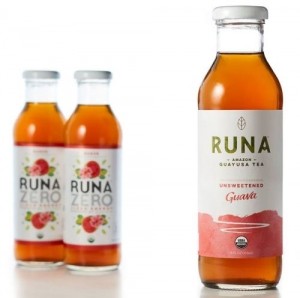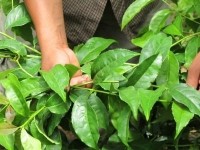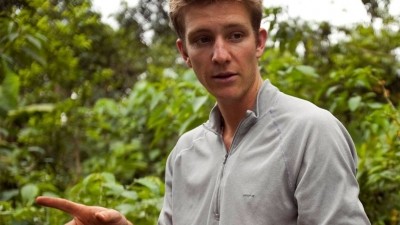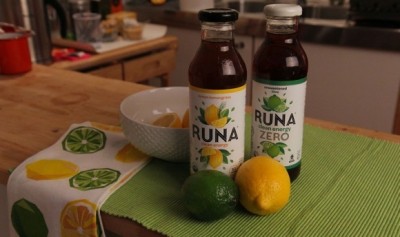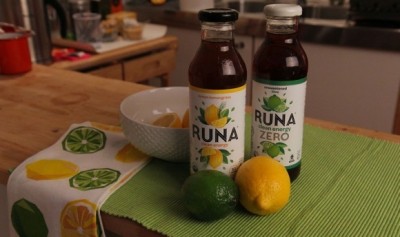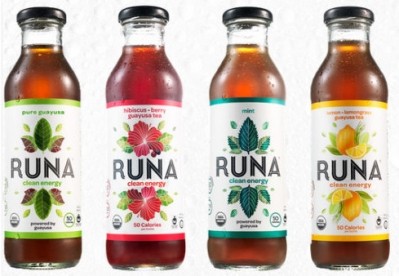RUNA on course to generate $10m in revenues in 2016
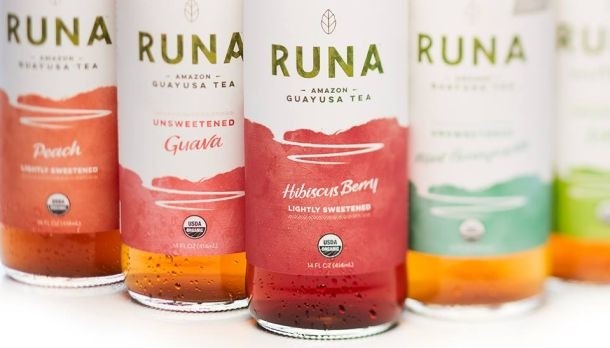
Speaking to FoodNavigator-USA after unveiling new packaging across all the brand's formats, co-founder and president Tyler Gage said RUNA did not disclose revenues, but given that the above figures were being reported in the media, he could confirm that they were “in the right ballpark.”
He added: “The natural channel continues to be the backbone of the brand, although we’ve made initial forays into conventional, so there is a huge amount of run room to grow there. However, foodservice is actually our fastest growing channel, some of our highest volume accounts are in corporate cafeterias: Apple, Google, facebook.
“The [glass] bottles [which have 90mg caffeine from the guayusa leaf] still account for the majority of our business, but the cans [which are on a ‘clean energy’ platform and contain 120mg caffeine] are the fastest growing segment; they are really starting to break out in both natural and conventional channels.”
New packaging: ‘It’s modern and clean but it also tells a story…’
Asked about the new packaging, he said: "When we designed our original packaging it was [co-founder] Dan [McCombie] and I, as college students, trying to put together a package that basically looked enough like a tea to be believable, so if it looked a little bit generic and a little bit like other brands, then that was probably a good thing when we had no idea what we were doing and no marketing budget.
“With the rebrand, we wanted to bring out the discovery element, the functionality, the sourcing and we did a lot with the texture of the label, to bring out the premium, natural, enticing elements of the brand, which is all about a journey of discovery, it’s modern and clean but it also tells a story.”
RUNA has key points of difference in the tea category
Retailers, he said, particularly like the fact that Runa sits in the tea category (although it’s technically not a tea in that it is not derived from the Camellia sinensis plant), but has a unique positioning, owing to its use of guayusa.
“We’re a functionally-driven product so we have an energy message and benefit, which helps expand the tea category.”
Secondly, he said, guayusa gives RUNA an edge over some other players in the RTD tea category in that you don’t need to add lots of sugar to make its products palatable: “Our best-selling skus are the unsweetened products. Guayusa has no tannins [which can add astringency/bitterness to green and black teas], so it has a smooth, naturally sweet taste with no sugar and no stevia, and we are the only brand that has that characteristic.
“We’re one of the few breakout brands in the category.”
‘Clean’ energy? ‘It’s a similar story to coconut water’
In the energy category, RUNA delivers in the same way that Red Bull does (and actually has more caffeine) but does so using simple, naturally functional ingredients, he said: “It’s a similar story to coconut water."
(RUNA Original Zero contains brewed organic guayusa, organic lime extract, natural flavors, citric acid and ascorbic acid (vitamin C).)
“It’s the same price as Red Bull, it’s organic, it tastes great and you feel better when you drink it.”
Guayusa (pronounced 'gwhy-you-sa') the Amazonian leaf at the core of the RUNA brand, naturally contains caffeine, but it’s also got lots of antioxidants including chloragenic acids, isoflavones, and L-theanine. It also has no tannins, which the founders claim gives it a clean taste that's "remarkably smooth and slightly sweet."
Ecuadorian Kichwa people have been boiling guayusa leaves in water to make teas for thousands of years, while hunters call it the ‘Night Watchman’ because it helps them stay alert.
However, when Tyler Gage and Dan MacCombie started writing their business plan for RUNA (which means ‘fully alive’ in the Kichwa language) in 2008/9, there was not an established supply chain for producing and marketing the leaf locally, never mind to the US market, say the founders, who launched RUNA with a grant from the Ecuadorian government.
Today RUNA works with thousands of indigenous farmers in Ecuador, who harvest the leaves and sell them to Runa, which dries and mills them in a processing facility in Archidona, in the Napo Province of Ecuador. The leaves are first withered (pre-dried) on long troughs to allow the flavor to set in and to reduce the moisture content of the leaf.
They then enter industrial batch dryers to fully dry out before they are milled, sifted and packed into bags and shipped to the US. They then go through a concentration process so that they can be used in ready-to-drink products.
Supply chain scalability
Asked whether RUNA could rapidly scale up production of the guayusa leaf should it win a significant new tranche of business, he said: “That’s why I lived in Ecuador for so many years so that we could focus on the scalability of the supply chain.
“We take it very seriously and we’ve invested a lot of resources and planted over a million trees in our reforestation programs to support not only conservation efforts but also to increase supply.”
RUNA, which was founded by Tyler Gage (right) and Dan MacCombie (left) in 2009, has built a vertically integrated supply chain for guayusa leaves (which naturally contain caffeine) from farms in Ecuador to shelves in the US and used the leaf as the cornerstone of a range of ready-to-drink beverages, carbonated ‘clean energy’ drinks, loose leaf teas and infusions. Today they are available nationwide in around 8,000 stores from Whole Foods to Safeway, as well as Amazon.
Leonardo DiCaprio reached out to us…
One thing that sets RUNA apart from many beverage brands – and has clearly helped it secure investment capital from celebrity backers such as Leonardo DiCaprio and Channing Tatum as well as industry investors such as Mark Rampolla – it that its mission and its brand are completely interconnected, while its products cannot easily be imitated because it has spent years building a supply chain around its core ingredient (the guayusa leaf), he said.
“The more we grow, the more we help the farming families.”
And at a time where consumers and celebrity investors alike want to feel good about the brands they enjoy and support, RUNA is particularly well-placed, acknowledged Gage.
“We didn’t go out actively searching for celebrity backers. Mutual friends introduced us to Channing and he brought in some of his friends, and DiCaprio reached out to us; he approached this from a mission point of view and he wanted to collaborate.”
Exit strategy: ‘At this point, we’ve got our heads down and we’re focused on growth’
Asked about the exit strategy, and whether he saw RUNAs future as being part of a big food company, he said: “No not necessarily; at this point, we’ve got our heads down and we’re focused on growth.”
Who’s driving innovation in the food industry? Head to Food Vision USA 2016 in Chicago on November 9-11, to hear from brands at the cutting edge, from Health Warrior and Quest Nutrition to Grainful and Veggie Fries…
